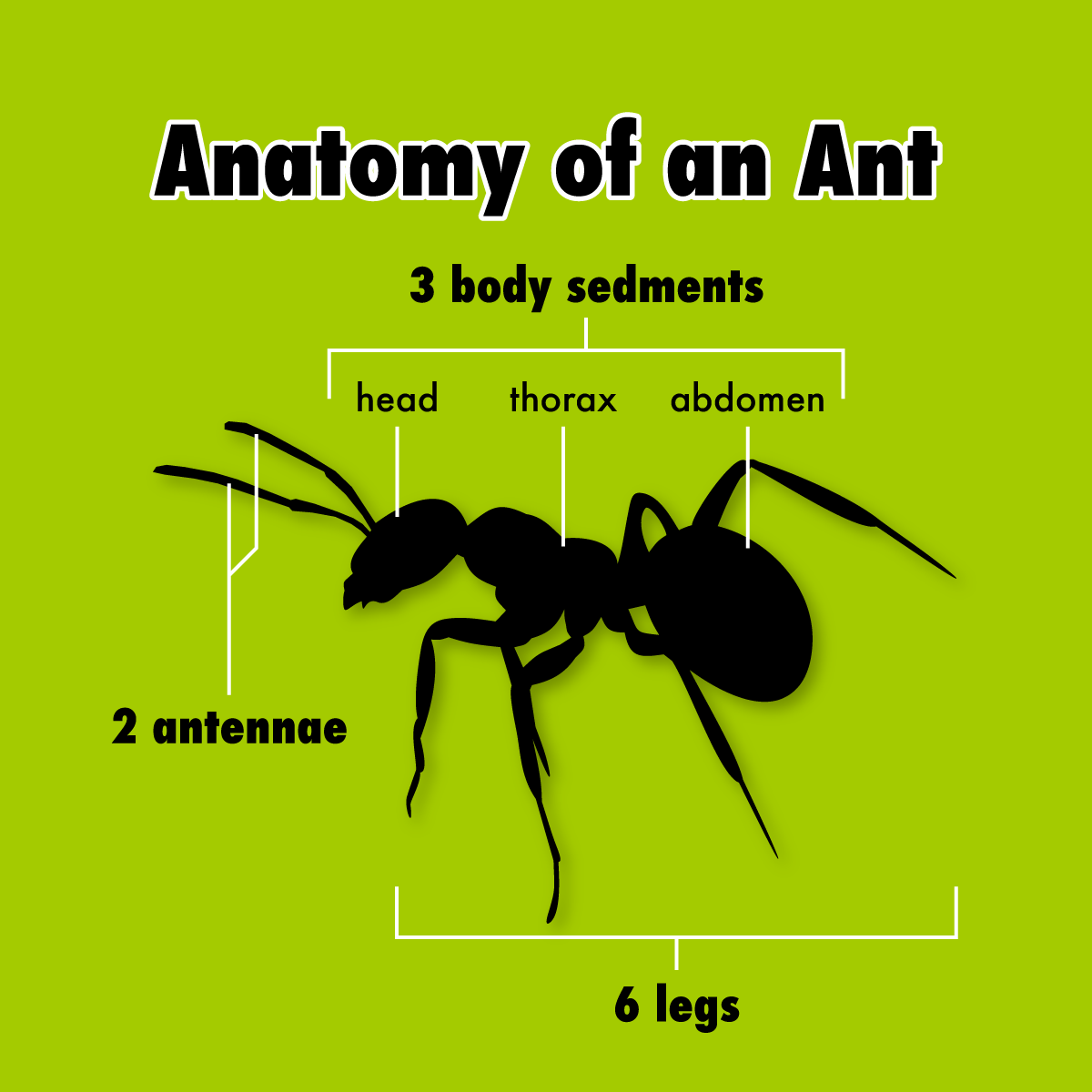
Ants are insects, like grasshoppers, beetles, and butterflies – they have three body segments, six legs, and two antennae, and the hard part of their body is on the outside.
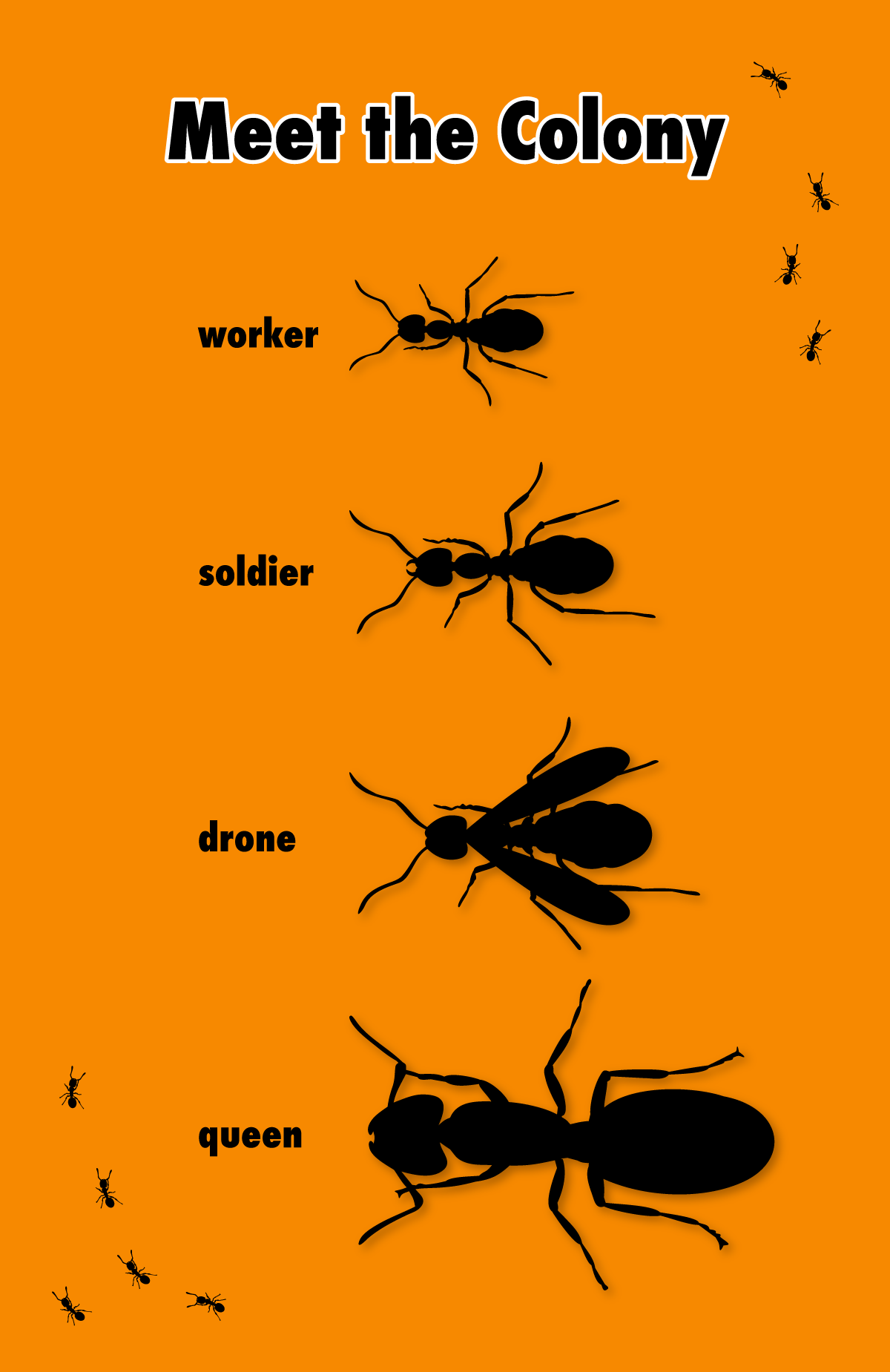
Unlike most insects, ants live and work together in huge teams called colonies. A colony can have hundreds or thousands of ants, and different ants in the colony have different jobs.
The ants that you see walking around outside are the workers. They collect food for the colony, dig the tunnels, and take care of baby ants. There are lots and lots of them, and they’re all girls—in fact, they’re usually all sisters! Some kinds of ants have a few especially large workers that are soldiers, protecting the nest from other ants.
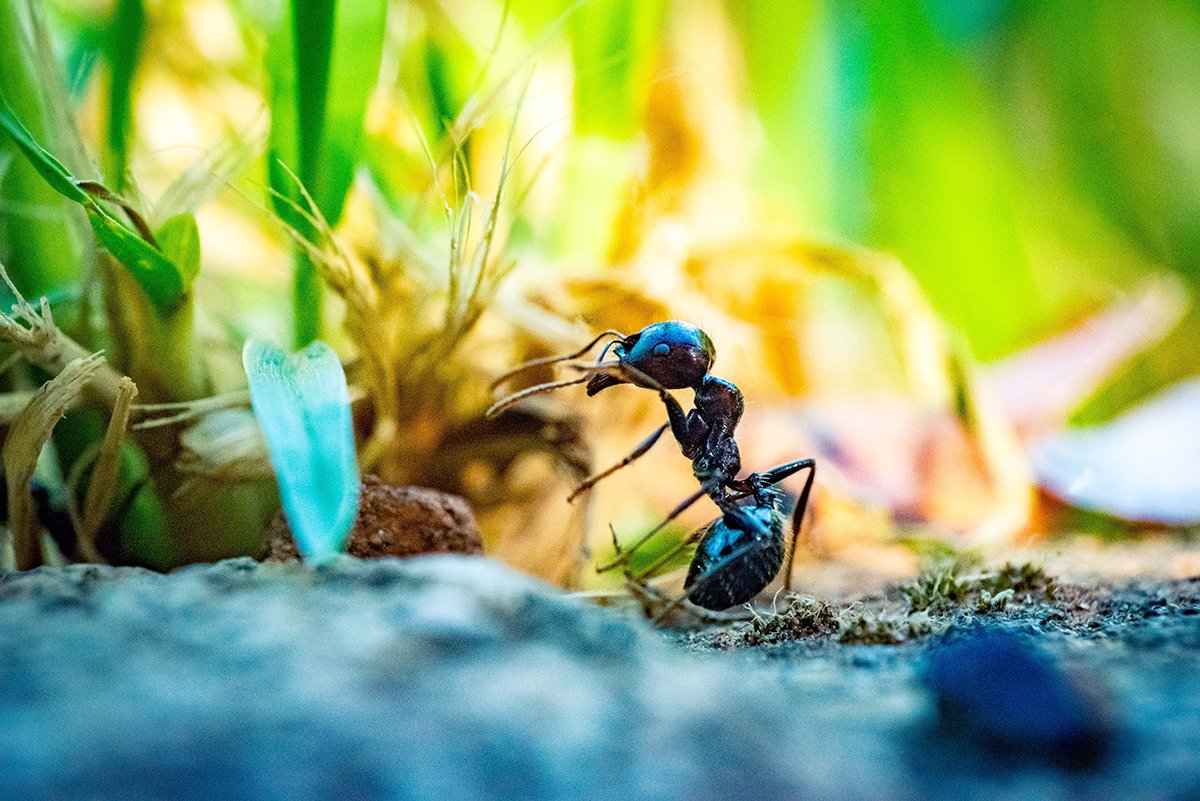
Deep inside the nest lives the queen (or sometimes more than one). She’s usually bigger than all the other ants, and her job is to have babies. In fact, she’s the mother of all the workers.
There aren’t many boy ants, called drones. They usually have wings, so that they can fly away and help start new colonies.
The colony needs all the different jobs in order to work. The queen can’t collect food, so she needs the workers. But the workers can’t have babies, so they need the queen.
By cooperating, ants can do amazing things, like dig huge nests, use their bodies to form rafts or bridges, sew leaves together, or farm other insects for food! Some scientists say that a colony of ants acts like one single animal.
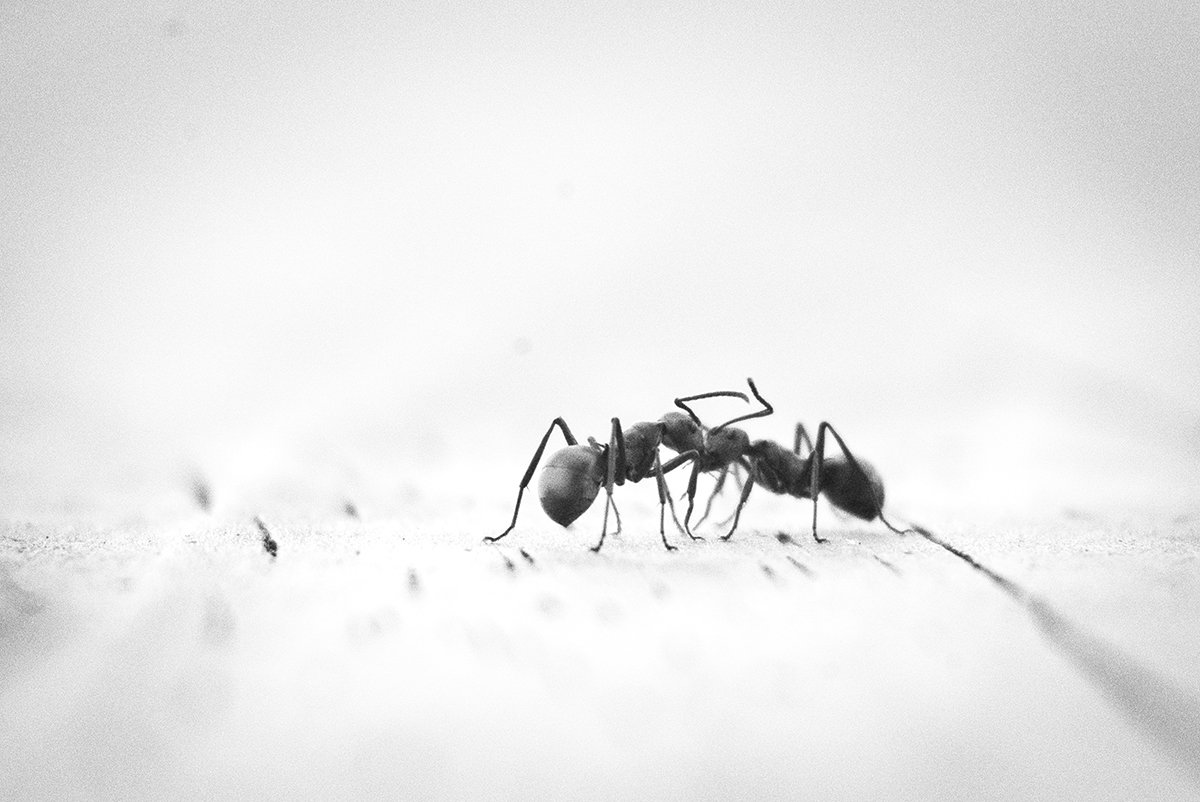
Find some ants outside and watch them. Put a couple of crumbs of food down for them and see what they do. When a worker ant finds some food, she takes a piece back to the nest, leaving an invisible trail that the other workers can smell. They follow the trail to the food and help collect it too.
Because small animals are much stronger (compared to their size) than large ones, ants can lift objects that are bigger than they are. That’s like if you could pick up a car!
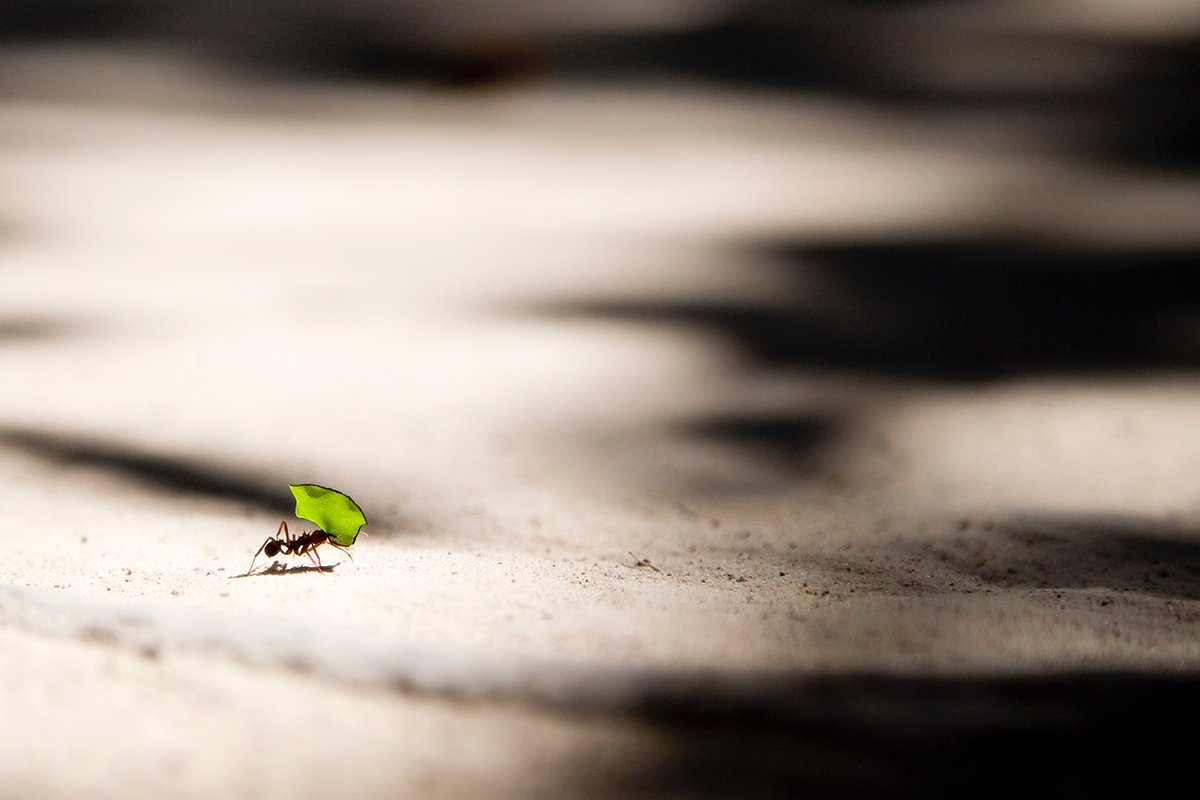
Don’t forget to follow us on Twitter, Instagram, Pinterest, and Facebook!
 Contributor
Contributor
Grant Harding is a puppeteer with a degree in biology and a passion for education and the environment. Follow Grant on Twitter, or check out his website.
Original content © 2018 Super Simple. Not to be reprinted without express written permission. Terms of Service.

